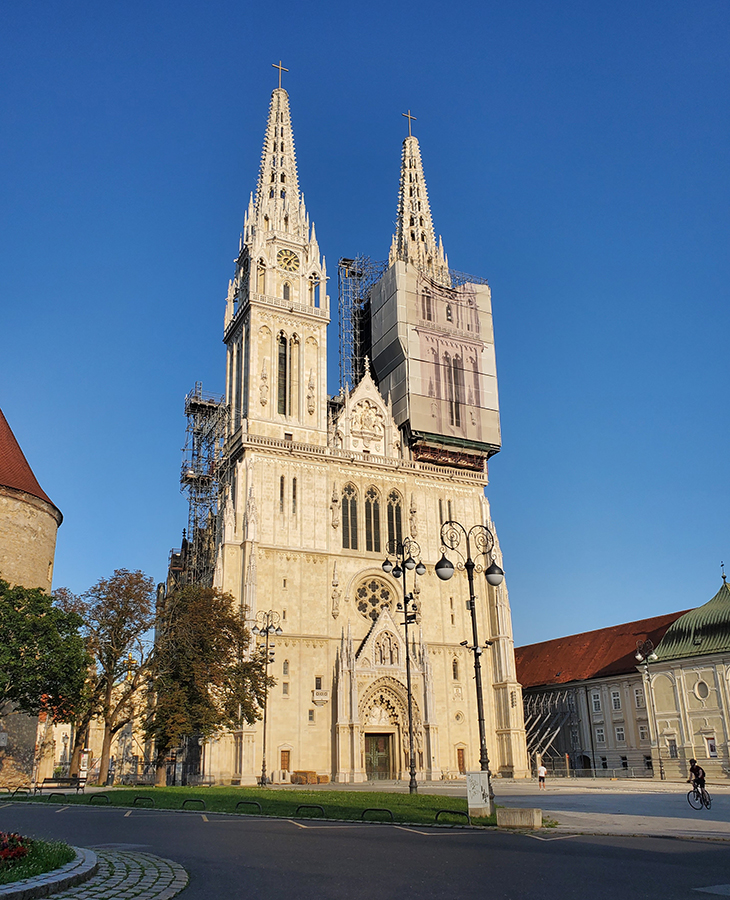On 22 March, as is not as widely known as it should be, a terrible earthquake struck Zagreb, the capital of Croatia. The strong quake (5.3 on the Richter scale) coincided with both the start of the country’s Covid-19 quarantine and a day of bitter cold, wind and snow. It was bad enough restoring the city after the ravages of the Croatian war of independence in the 1990s; now conservation work must begin all over again on certain buildings and works of art.
Five important museums in Zagreb have suffered grievous damage, as has the great Gothic and neo-Gothic cathedral and the Archbishop’s Palace. The damage was particularly severe to the Museum of Arts and Crafts, with fallen roofs, collapsed ceilings, broken furniture, shattered display cases and everywhere an abundant covering of broken plaster, rubble, glass and tiles. The museum is modelled on the Victoria and Albert Museum in London, and contains a wide range of important and beautiful applied art. The Museum of Contemporary Art (MSU), the Senoa House, the Archaeological Museum and the Croatian Academy of Sciences and Arts (HAZU) have all suffered similarly. All these buildings and many more have also been affected by the consequences of water egress.

Zagreb Cathedral in 2020, after the earthquake on 22 March. Photo: Ex13/Wikimedia Commons (CC BY-SA 4.0)
The cathedral and Archbishop’s Palace were damaged considerably; one of the cathedral’s twin towers – already scaffolded and under conservation – was shattered, its pinnacles and carved masonry collapsing. The quadripartite vaults of the nave were shaken with much loss of the intonaco and damage to the stained glass. However, one exciting discovery has been made in the aftermath of the earthquake: beneath the cathedral floor were found four important sections – including the torso – of the tomb of Bishop Luka Baratin (d. 1510), of which other fragments have been displayed for many years in the Croatian History Museum. This fine red-marble Italianate object, formerly attributed to Giovanni Dalmata, has recently been attributed by the Croatian art historian Milan Pelc to Johannes Fiorentinus. Hopefully all the sections will now be cleaned, conserved and reunited.
The Prince of Wales and Duchess of Cornwall visited Zagreb in 2016; having heard of the recent disaster, in late April this year they sent a generous donation to the Government of Croatia Fund for the reconstruction of Zagreb. But the city’s museums and historic sites are suffering severely, a situation compounded by the problems resulting from the coronavirus pandemic and the ensuing loss of ticket revenues. The International Trust for Croatian Monuments has already sent money, archival boxes and conservation materials, but much more help is urgently required.
Donations to restore cultural heritage damaged in the Zagreb earthquake can be made via the International Trust for Croatian Monuments.














![Masterpiece [Re]discovery 2022. Photo: Ben Fisher Photography, courtesy of Masterpiece London](http://zephr.apollo-magazine.com/wp-content/uploads/2022/07/MPL2022_4263.jpg)
Suzanne Valadon’s shifting gaze